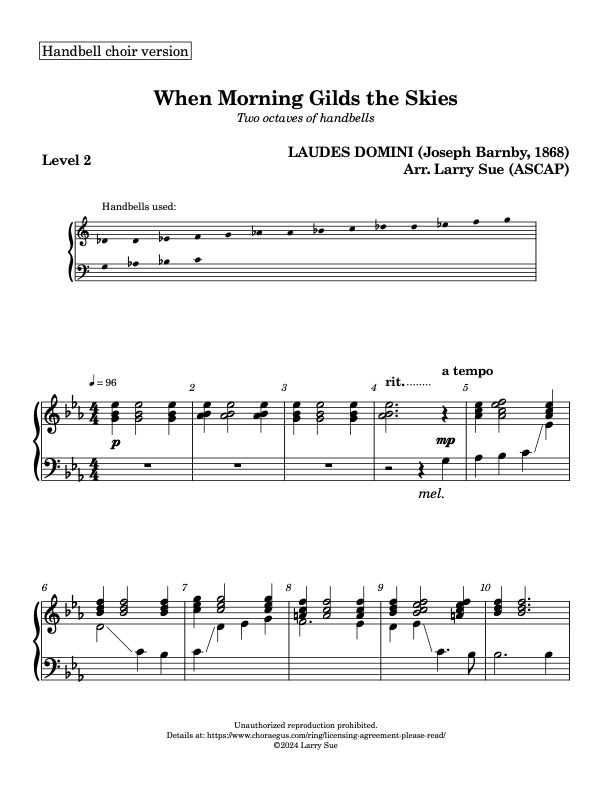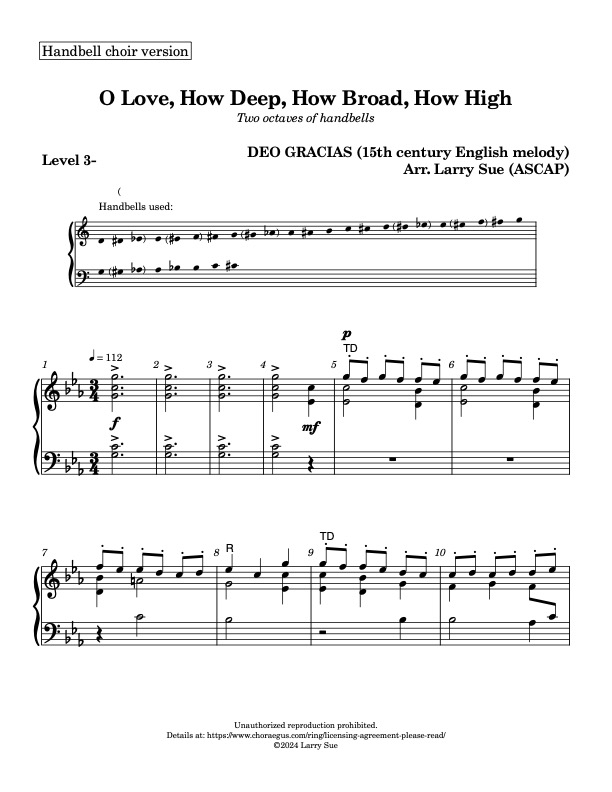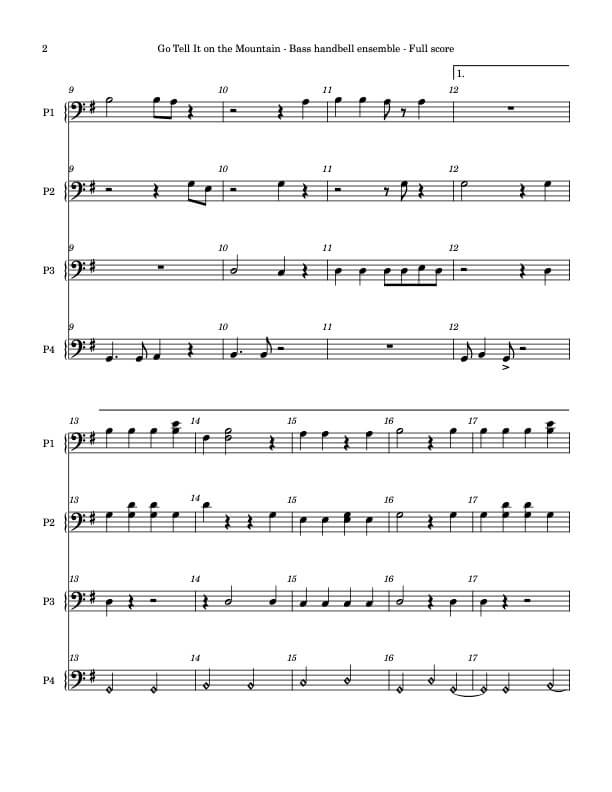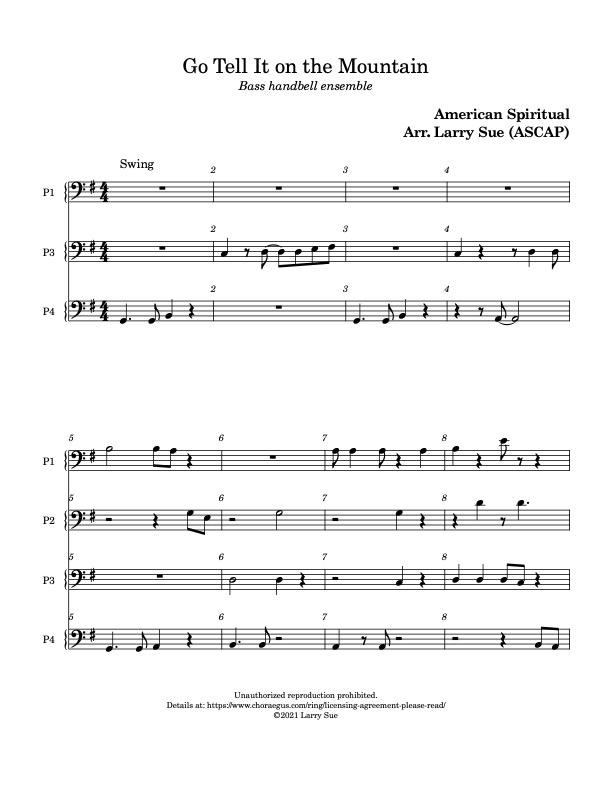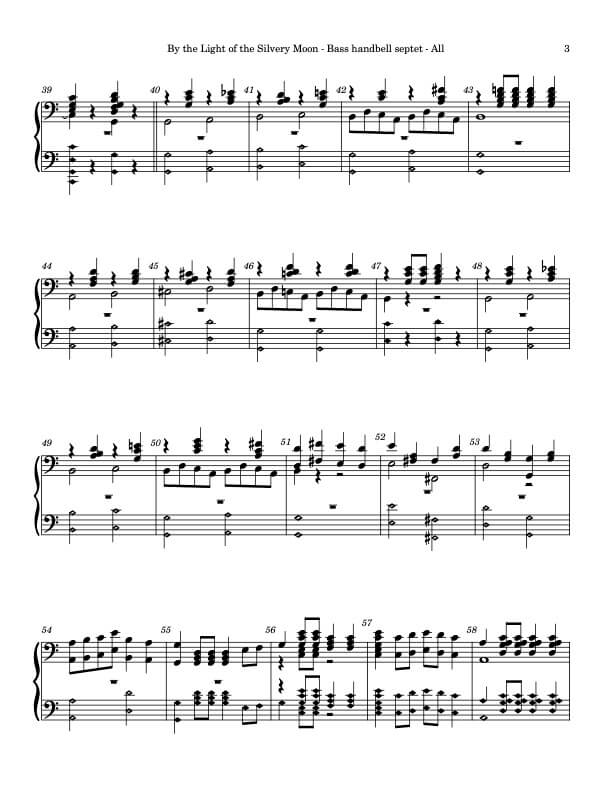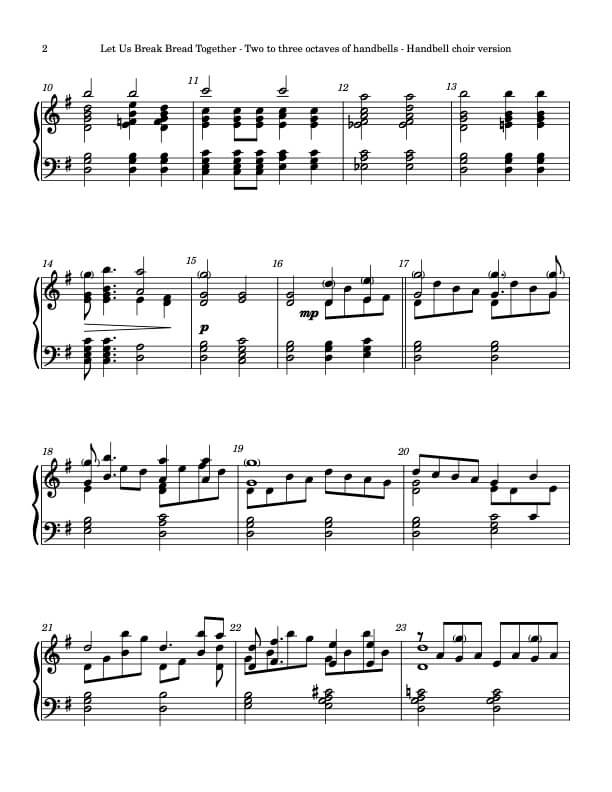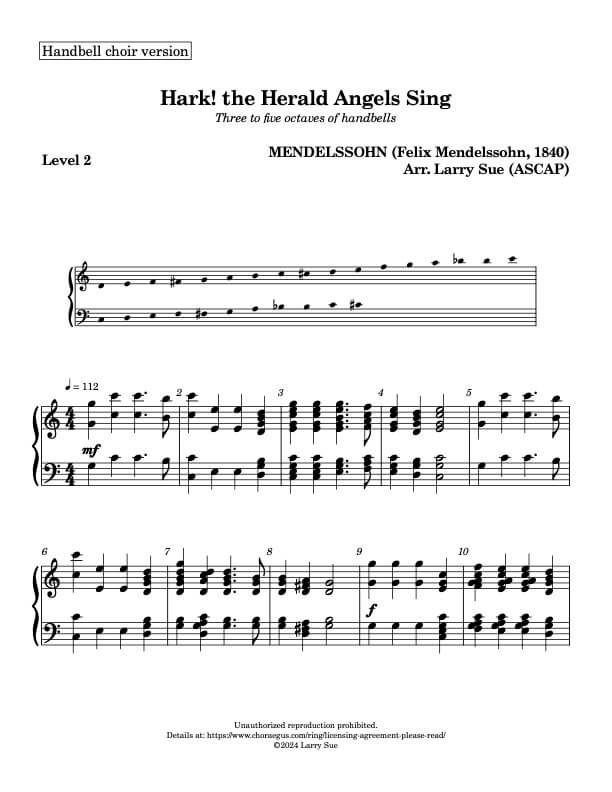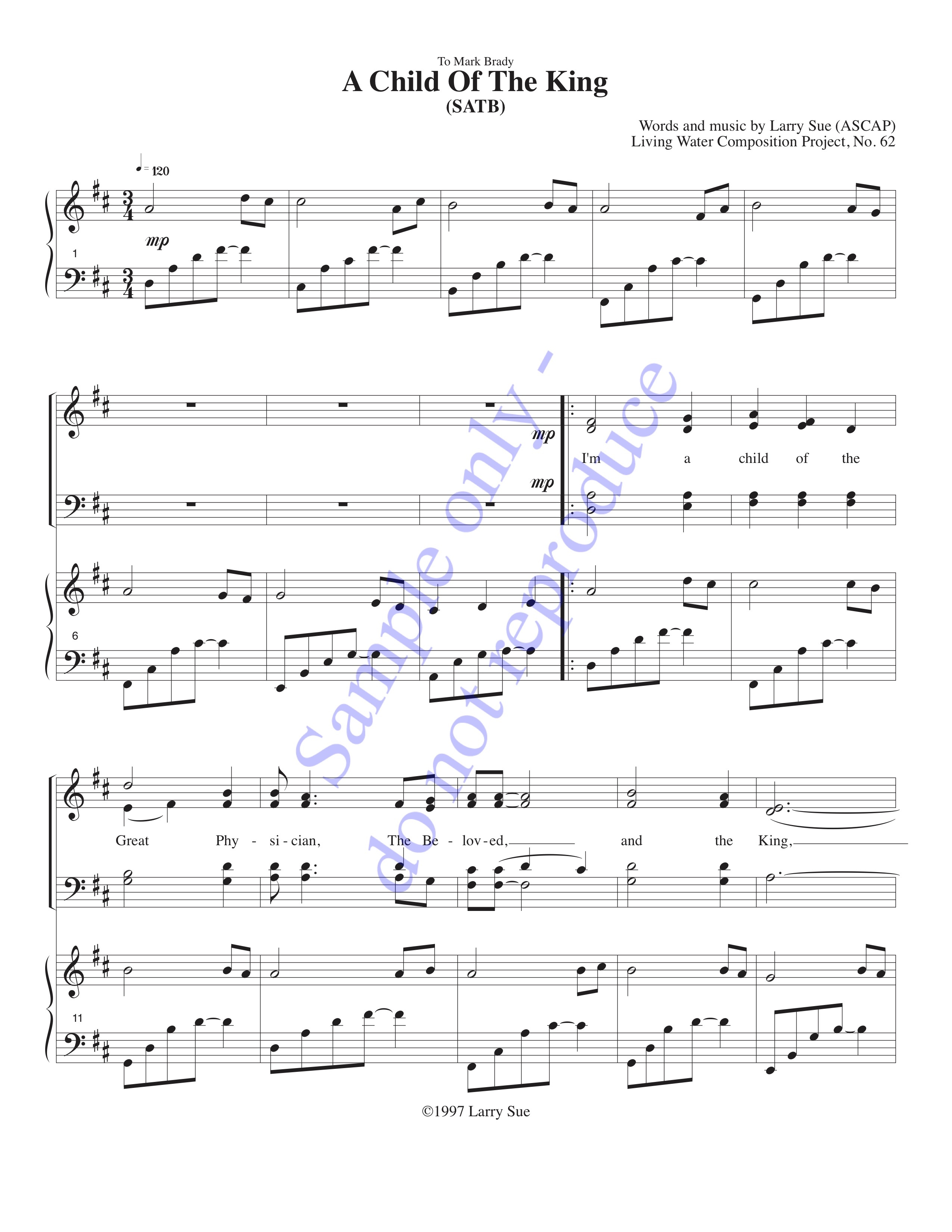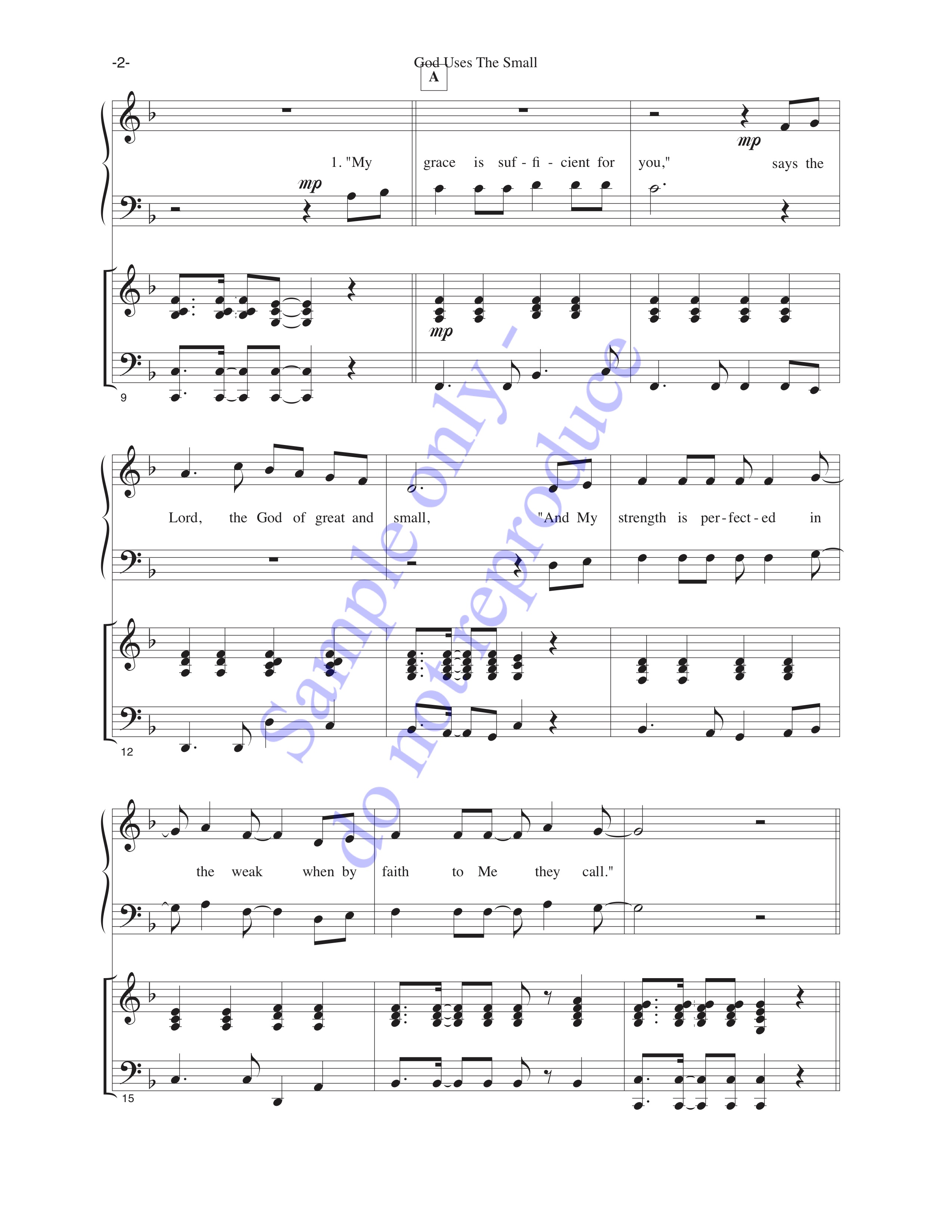We’ve been hearing about how some ringers out there have wondered why our eight-bell music was written in the range G5-G6. The main issue that came up was that playing those pieces as a quartet would result in “nontraditional” ringing assignments (say, G5/A5 rather than A5/B5). Why not, say, write using F5-F6?
The reason is that there’s a casting size change between F5/F#5 and G5. This results in F5/F#5 having a noticeably mellower sound than G5 and higher bells; there also is a significant difference in weight that can be problematic for a four-in-hand ringer with the lower bells. So our music takes advantage of the more consistent timbre and weight that’s found using the octave that starts from G5. Nevertheless, we do understand that learning “left = space, right = line” is a simple and effective way to teach people how to correlate their notes with their bells!
So for those who prefer thinking that way, we’ve made (almost) all of our unaccompanied eight-bell scores “dual-range”™! Each dual-range score (at the same price as before) has two copies of the music:
- One based on G5-G6, so you can hear the music as it was originally intended to sound, and
- One based on F5-F6, in case you prefer to have all or mostly space-line pairs of notes.
Cool rehearsal/performance hint: If you want the music to sound as originally composed, but prefer “space-line” assignments, all you have to do is assign from the G5-based score, and read from the F5-based score!
Thank you for all your support and encouragement as we’ve continued publishing new music for handbells!


